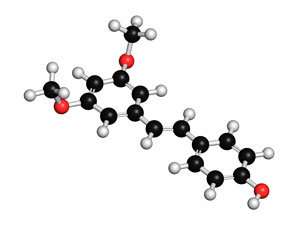Palladium catalyst speeds up two separate reactions, making useful molecules in a single process

A palladium catalyst developed by A*STAR researchers offers a reliable and efficient way to create a molecular structure that is commonly found in medicines and electronic materials.
The structure is known as a stilbene fragment, which comprises two benzene rings, connected by two carbon atoms with a double bond between them. The benzene rings are able to carry a host of other chemical groups, so stilbenes make up a large and diverse family of molecules, which can be used in potential treatments for central nervous system disorders and as the active material in certain organic light-emitting diodes (OLEDs) used in advanced displays and lighting.
Until now, stilbenes have typically been made in a two-step process, with each step relying on different palladium catalysts and reaction conditions. The first step, known as a Suzuki coupling reaction, adds a two-carbon unit to a benzene molecule. After the product of this reaction, styrene, is extracted and purified, a second step, called a Heck reaction, tacks another benzene ring on the other end of the carbon-carbon double bond. The product of the first step, or 'the intermediate', however, is often unstable, making it difficult to handle and lowering the overall yield of the process.
Howard Jong of the A*STAR Institute of Chemical & Engineering Sciences and collaborators at the University of Ottawa, Canada, have now shown that a single palladium catalyst can carry out both of these steps in one reaction vessel, which avoids the need to isolate the troublesome intermediate. This 'one-pot' Suzuki-Heck reaction offers a more efficient way to make stilbenes, potentially saving costs and reducing waste associated with purification of the intermediate product.
The catalyst partners palladium with a bulky phosphorus-containing molecule called Cy*Phine. The team tested the catalyst's performance in the Suzuki coupling reaction using 48 different reaction conditions, varying the solvent and other reagents. After identifying the recipe that gave the best results, the researchers repeated this optimization process for the one-pot Suzuki-Heck reactions.
This gave them a reliable method that was used to make a broad range of model compounds that resembled commercial targets. The reactions typically gave average yields of 64–91 per cent for each step, comparable to performing the reactions separately. "However, being able to perform one-pot reaction sequences provides a quicker and more economical strategy," says Jong. "The savings of time, solvent, reagents, waste, and purification materials can be seen as a greener approach." The team now hopes to improve the method and use it to make stilbene derivatives for organic electronics.
More information: Uttam K. Das et al. One-pot Suzuki–Heck relay to prepare industrially valuable intermediates using the Pd–Cy*Phine catalyst system, Catalysis Science & Technology (2017). DOI: 10.1039/C7CY01344B



















